Arts Miami
Tony Japour Examines Margulies Collection
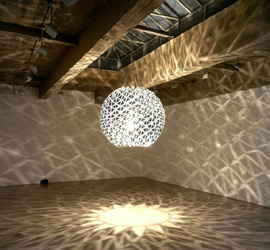

Anthony Japour (AJ) is an independent curator, private art dealer and owner of AJ Japour Gallery. The gallery deals in contemporary art with a focus on the Chinese Contemporary Art Movement and its relationship to the pillars of Western Contemporary Art. Since 2003, AJ has produced numerous art exhibitions and installations in Miami and South Florida. In addition, the Gallery’s secondary mission is to support organizations dedicated to the health, education, and welfare of children. AJ has served on the Fine Arts Board and the Cultural Arts Council of the City of Miami Beach.
“I Don’t Look for Art, Art Finds Me” — Martin Z. Margulies
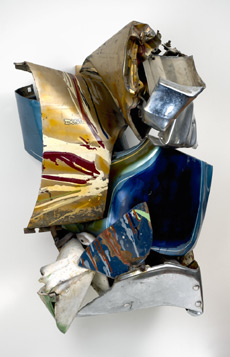
I have often compared Miami – with its local waterways and commercial gateways between North America and the Caribbean and Latin America – to 13th century Venice – with its waterways and Marco Polo’s travels on the Silk Road, the commercial gateway between Europe and China.
Like Venice, Miami has evolved in recent times as a destination for art and architecture. And, like Venice’s private art collections – the Peggy Guggenheim Collection and Francois Pinault’s Foundation, Punta Della Dogana – we in Miami have our own private collections exhibiting important artworks of our time.
Among these private collections is the subject of this month’s column, real estate developer, art collector and philanthropist Martin Z. Margulies, who through his foundation, the Martin Z. Margulies Foundation, funds and operates the Margulies Collection at the Warehouse, a not-for-profit institution dedicated since its inception in 1999 to the exhibition and education of contemporary art.
At a recent philanthropic gathering at the Warehouse, Mr. Margulies hosted Feeding South Florida, a non-profit organization that provides about 2 million pounds of food each month to hungry South Floridians. The event drew approximately 450 persons and raised over $200,000. The Warehouse has also been a longtime supporter of the Lotus House Shelter, providing housing and support for homeless women allowing them to become re-engaged with society.
Margulies and his long-time curator Katherine Hinds were on hand to greet guests and offered us some insight into the development and vision for the collection.
Martin Z. Margulies Foundation, Inc.
591 NW 27th Street
Miami, FL 33127
mcollection@bellsouth.net
www.marguilieswarehouse.com
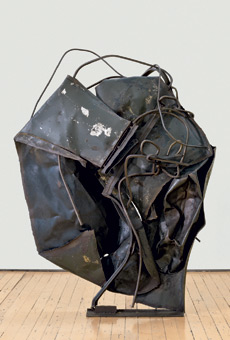
With such names as Richard Serra, Michelangelo Pistoletto, Dan Flavin, John Chamberlain, Olafur Eliasson and Antony Gormley on view right now, the Margulies Collection at the Warehouse is a virtual Who’s Who in contemporary sculpture.
The Collection, however, doesn’t limit itself to the established artists but also finds room for emerging artists who may or may not join the ranks of the most important artists of our time.
During an interview with SocialMiami.com, Margulies himself gave us insight into his mission for the Warehouse, which is not necessarily to collect the most important and iconic works by a specific artist (which can get very very expensive) but to collect works that are distinctive of the artist’s oeuvre. This objective makes sense as the Warehouse functions as an educational institution for the citizens of Miami. If you have children, grandchildren, nephews or nieces and want to teach them about contemporary sculpture, or just want to educate yourself, go to the Warehouse for a tremendous and enjoyable art experience.
John Chamberlain
John Chamberlain (American, 1927-2011) was born in Rochester, Indiana and is among the few sculptors spanning both 20th and 21st centuries immediately recognizable upon first look – dynamically colored sculptures of crushed and twisted automobiles.
Chamberlain moved to New York City in 1956 and created his landmark sculpture shortly thereafter – Shortstop, 1957 – made of discarded automobile parts created after he ran out of iron rods he had been using in his previous works; according to art history lore, Chamberlain found two fenders from a 1929 Ford, owned by fellow artist Larry Rivers, in the Hamptons and drove over them with a car to create a new three-dimensional shape. He then welded them together into a new abstract form.
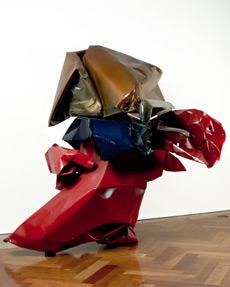
Thereafter, he achieved international acclaim by being included in an important Museum of Modern Art exhibition in 1961 and later the Venice Biennale in 1964.
His work has come to be most closely aligned with Abstract Expressionism. And talk about market appreciation – small Chamberlain sculptures, which sold for $30,000 less than a decade ago, now sell for $250,000 and more.
Both Chamberlain works on view at the Warehouse are early and iconic. Of the two, Dee Dee Bitch, 1976 is the more visually beautiful to behold with the combination of the reflective medium and the paint application in perfect harmony.
Mustang Sally McBright, 1965 is more closely related to the artist’s original intent of taking discarded automobile parts and fusing them into interesting three-dimensional shapes. One can see the progression from 1957 to 1976 where after 20 years of making these works, he became more confident in his artistic sense even injecting a bit of humor in Dee Dee Bitch with the long-gone Plymouth Duster (1970-1994) logo in prominent view.
The Solomon R. Guggenheim Museum in New York City will present a major retrospective of John Chamberlain’s work since 1986 commencing February 23, 2012 running through May 2012.
Olafur Eliasson
Olafur Eliasson (Icelandic-Danish, b. 1967) spent six years at the Royal Danish Academy of Fine Arts during the years 1989-1995 and immediately became a sought-after artist by museums and cities around the world for his installation work using light, water, and air temperature.

In 1995, the artist established a laboratory for special research in Berlin and in a few short years was exhibited at the Venice Biennale (2003) and in the Tate Modern in London (2003).
Among the numerous public art projects, Eliasson was commissioned in 2008 by the Public Art Fund in New York City to create four man-made waterfalls for New York Harbor. At a cost of over $15 million, it is one of the most expensive public art projects on record.
Critical to Eliasson’s success has been his collaborative nature, in particular his work with architects. One such link he established through his laboratory in Berlin was with Einar Thorsteinn, a noted architect and geometry expert.
The work on view at the Margulies Collection (Inverted Berlin Sphere, 2005) is a stunning example of the influence of geometry. Having visited the Warehouse in the past I must admit I preferred it when it was installed in one of the smaller rooms where the interaction between the object, the light and the surrounding walls had greater impact.
Richard Serra
Richard Serra (American, b. 1939) is most known today for his monumental-scale sculptures made of COR-TEN steel (a steel alloy with a rusty appearance) known as his Torqued Ellipses Series where he pushes the boundaries of engineering in creating these works. COR-TEN steel takes eight to 10 years to oxidize to achieve the dark amber appearance and does not change after that time. Serra’s works (formerly made in the United States) are now built in Germany. Serra feels there is great pride in the German work and that the quality of the steel produced is better than in the United States today. Like John Chamberlain’s sculptures, Richard Serra’s amber-colored works are instantly visually associated with the artist – increasingly difficult to achieve in contemporary art today.
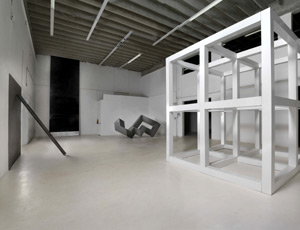
On view now at the Warehouse is one of Serra’s works from a long series involving lead plates and pipes. Rather than welding pieces of metal together, as had been done by other artists, he leaned them against one another allowing gravity to play a role in the experience of viewing the work. The highly acclaimed artist is considered one of the most important living sculptors of our time and one who emphasizes the material of his work and the interaction between the viewer, the space and the work.
What’s next at the Margulies Collection?
For our readers who’ve already visited the Warehouse during the 2011 Edition of Art Basel-Miami Beach, Mr. Margulies gave us at SocialMiami.com a sneak preview of the next installation. Margulies spoke excitedly of his new acquisition by British artist, Richard Long, four-time nominated and 1989 winner of the Turner Prize, the annual prize presented to a British artist under the age of 50 years.


